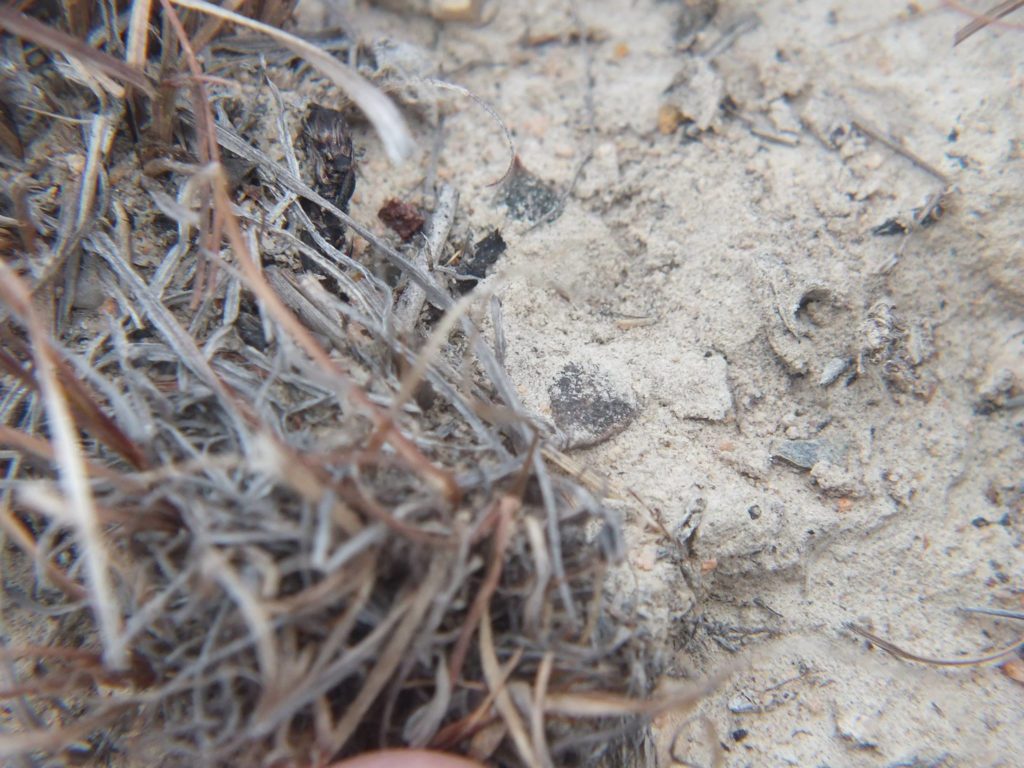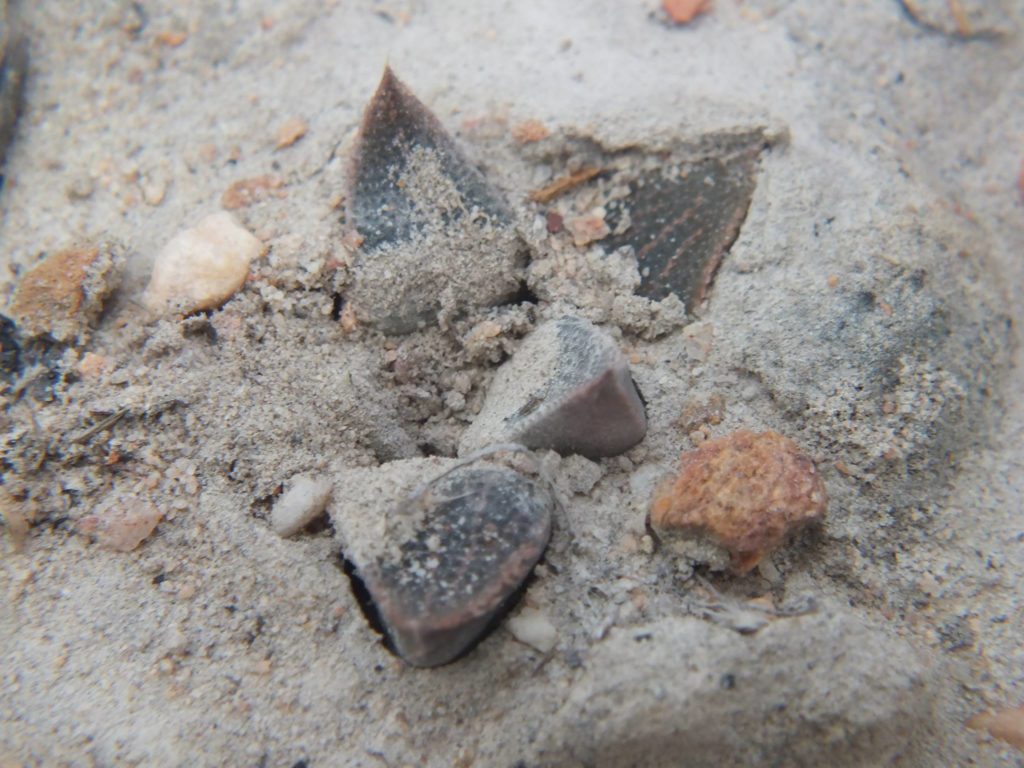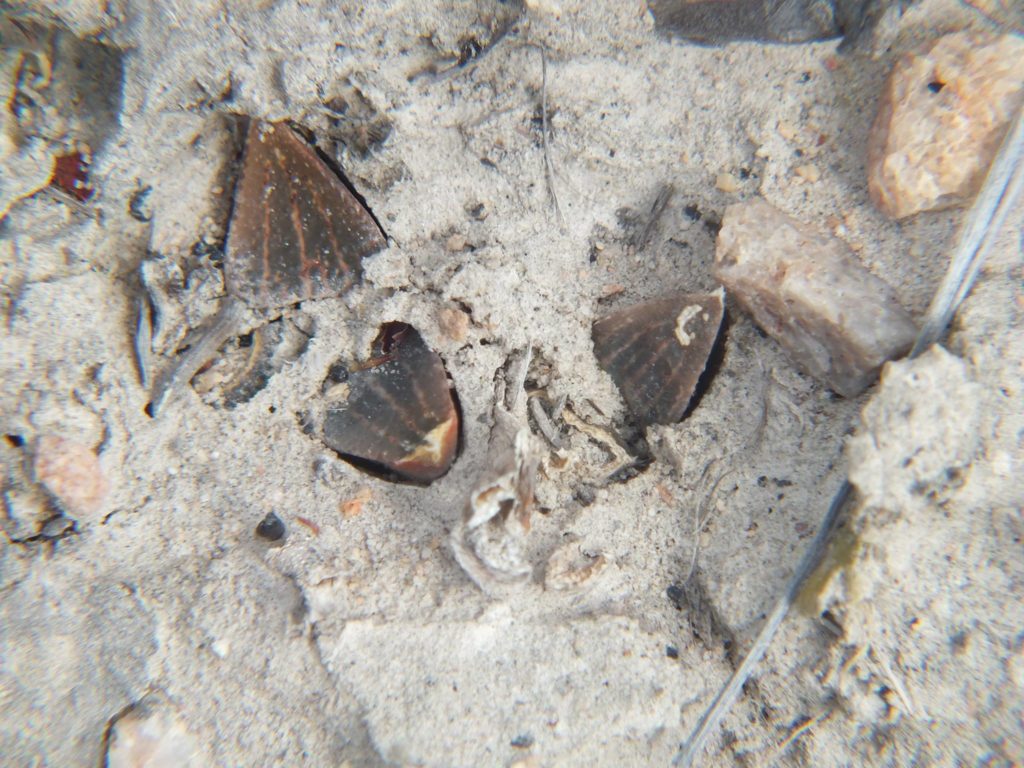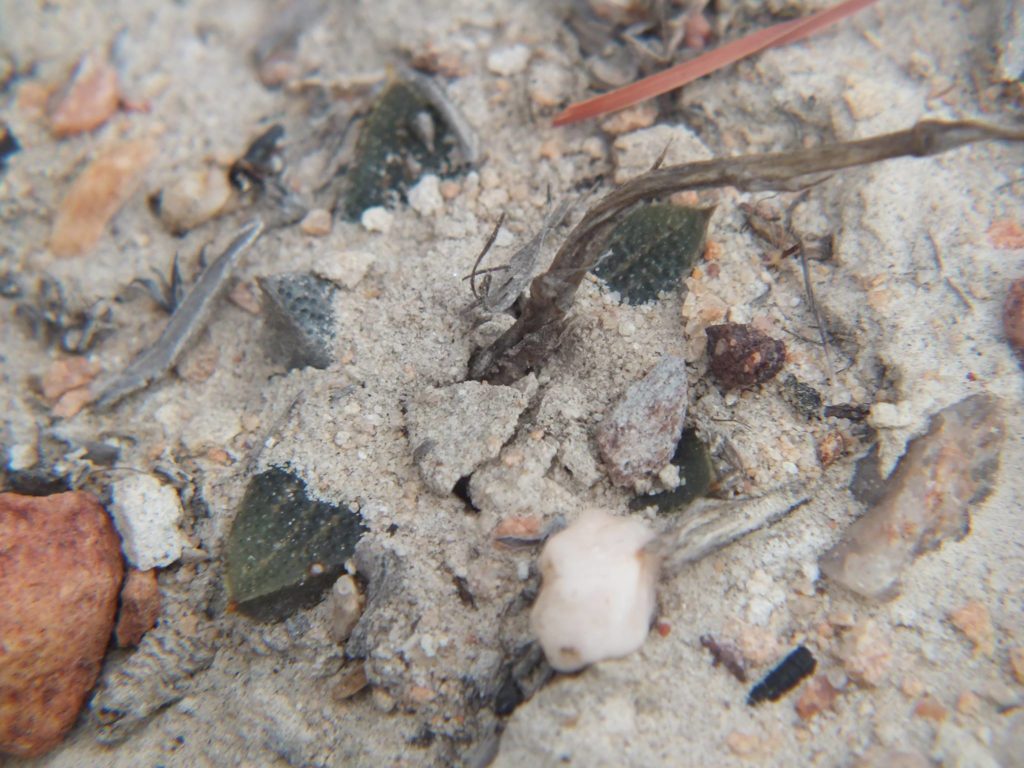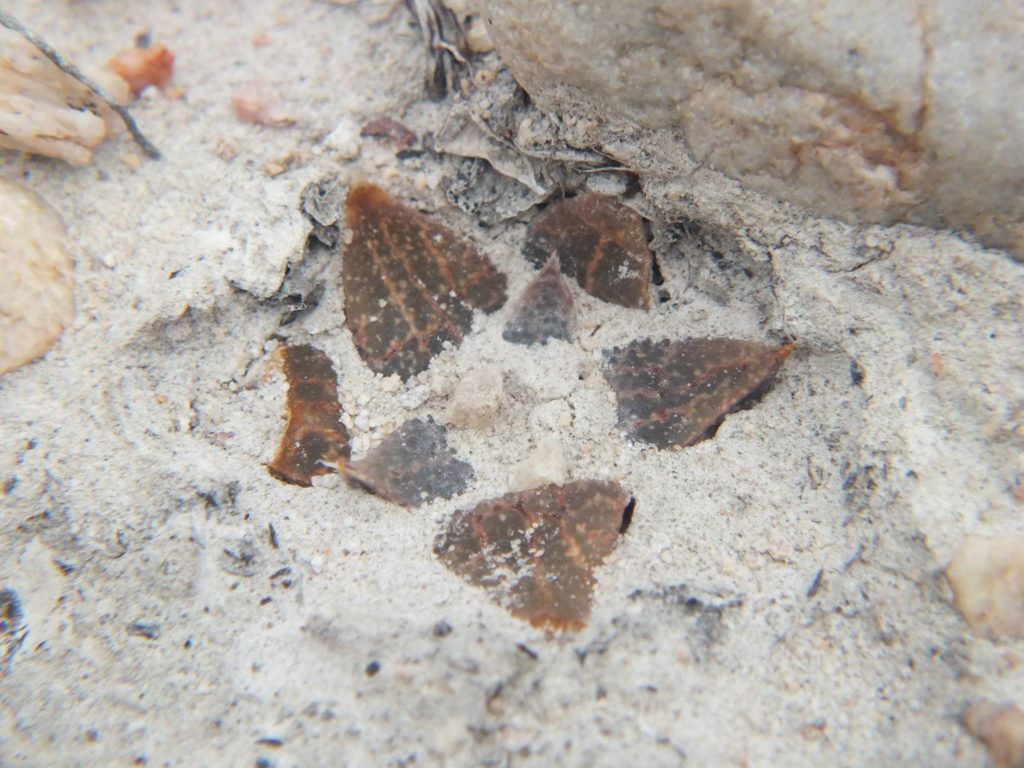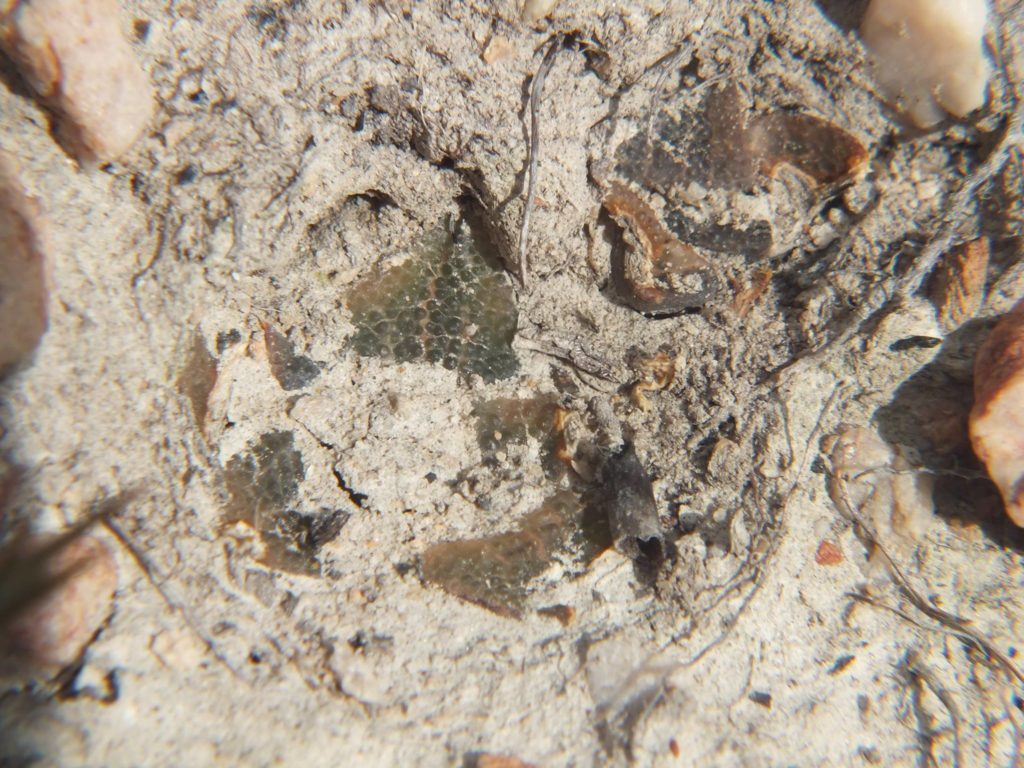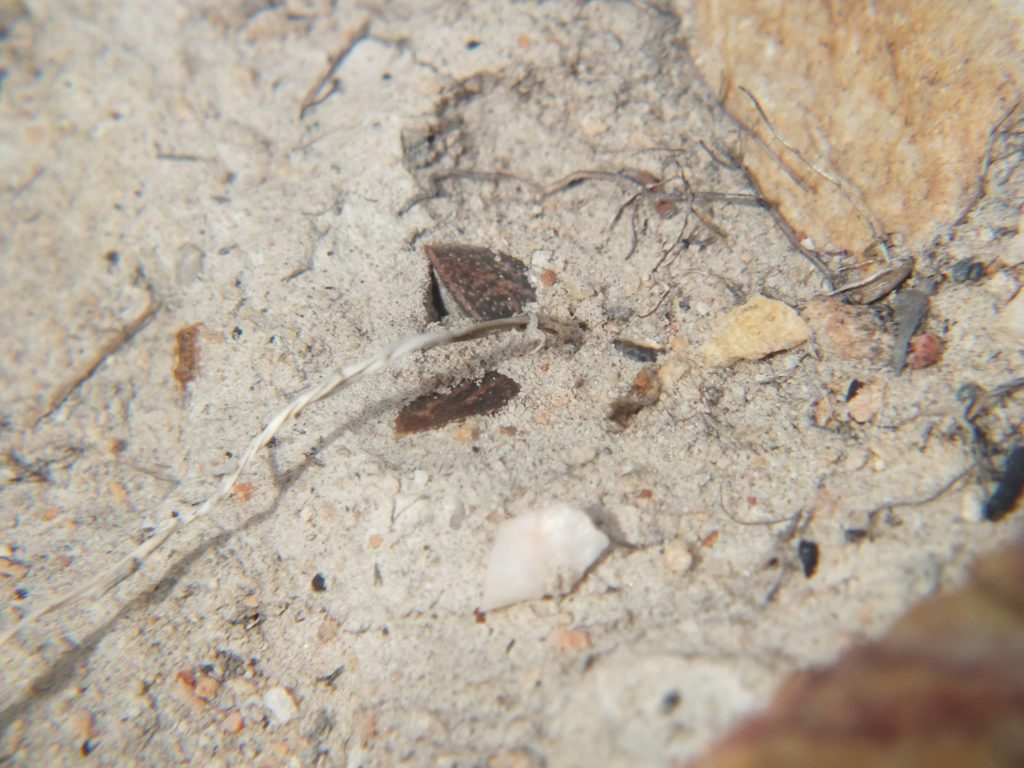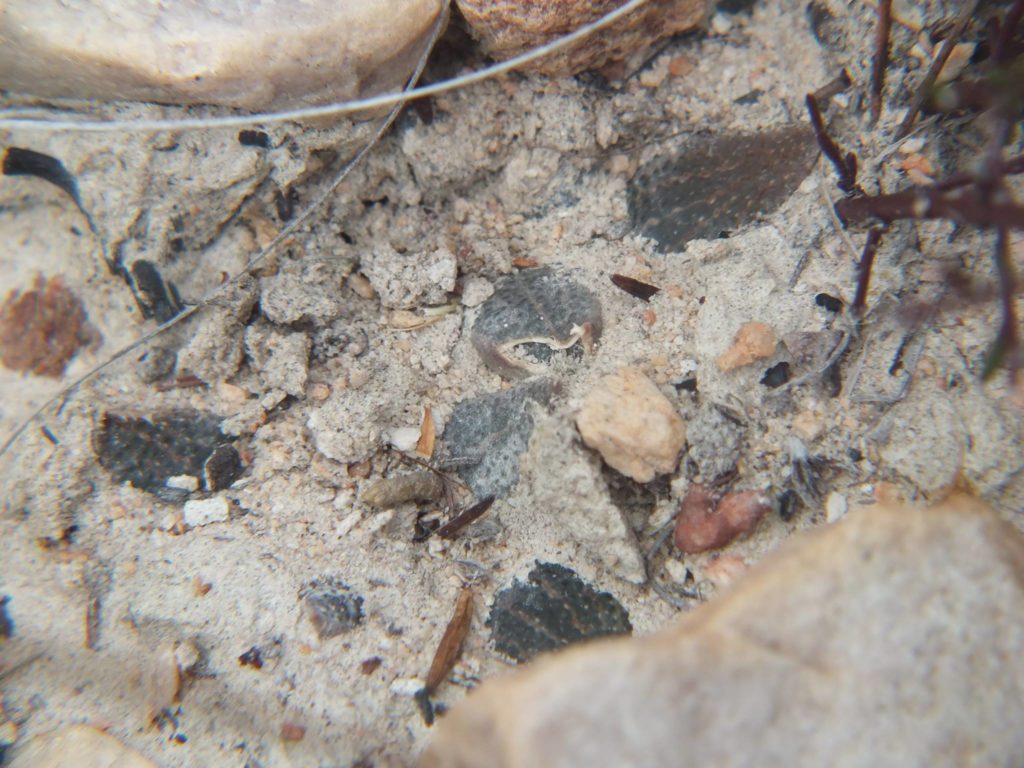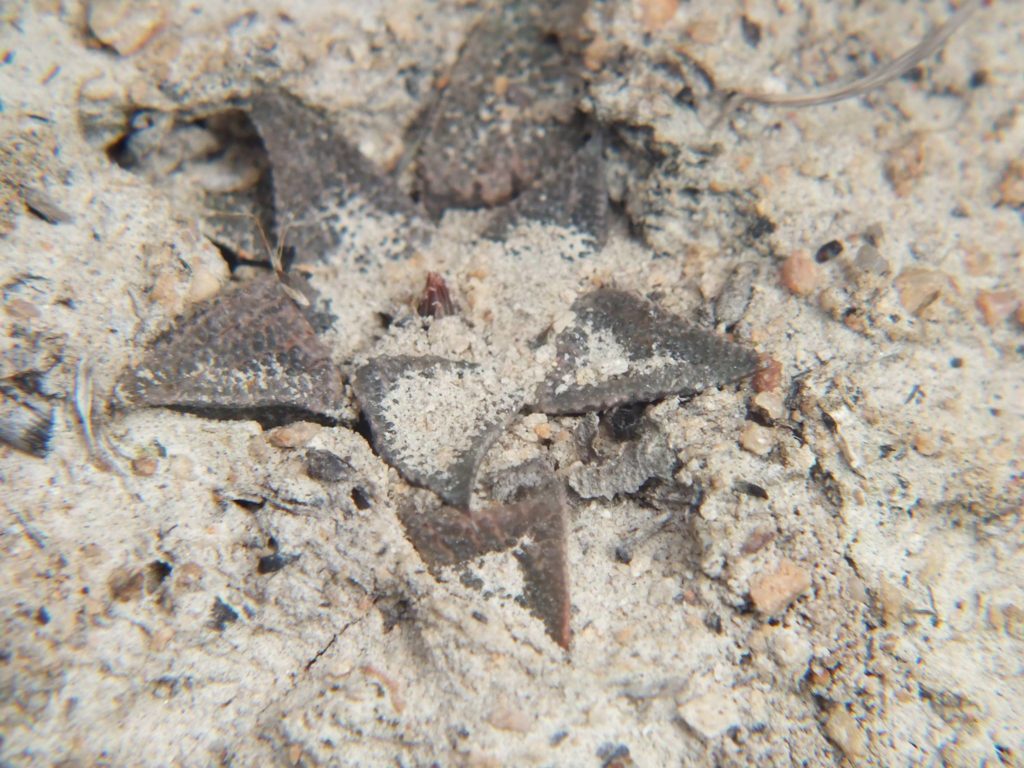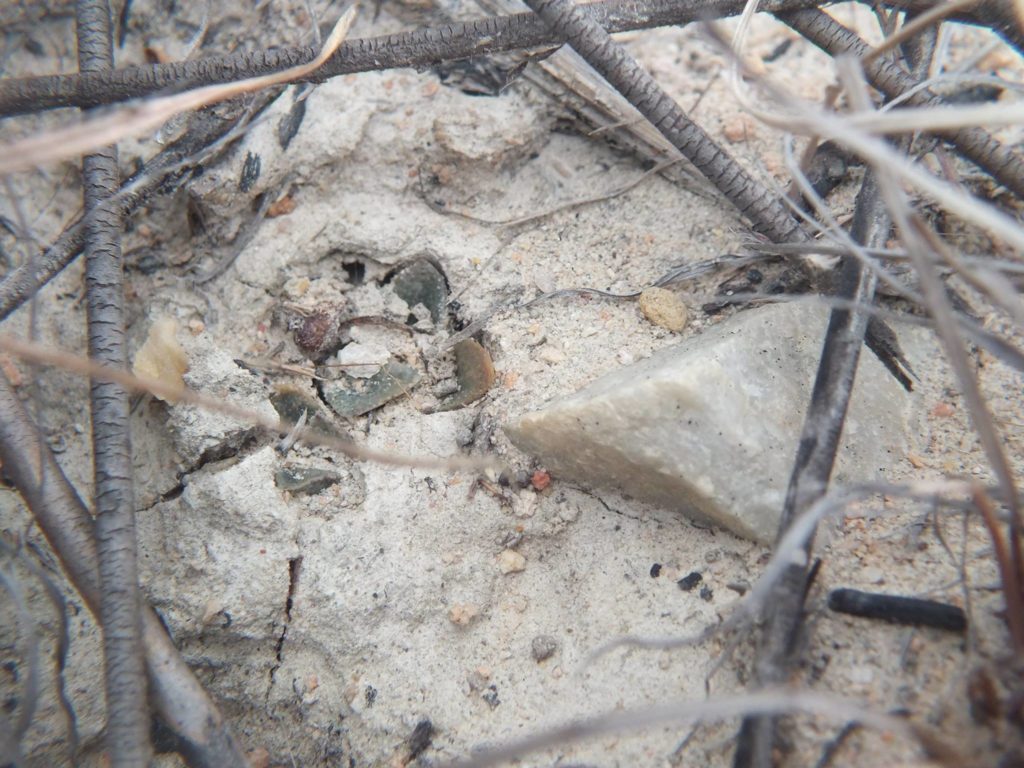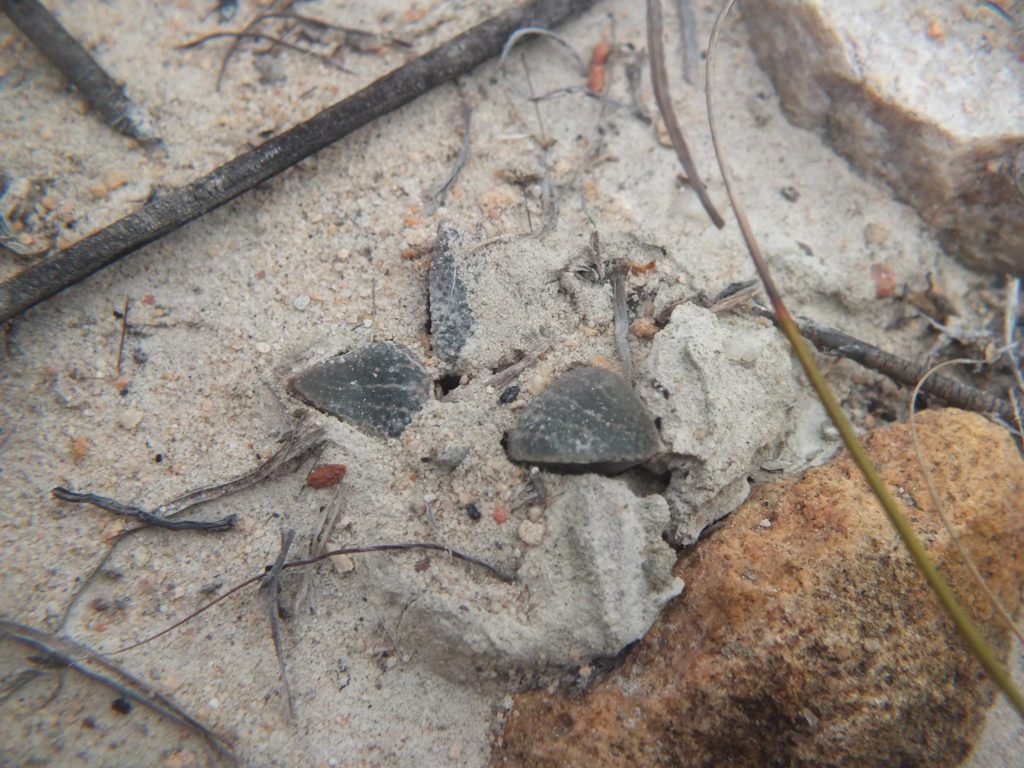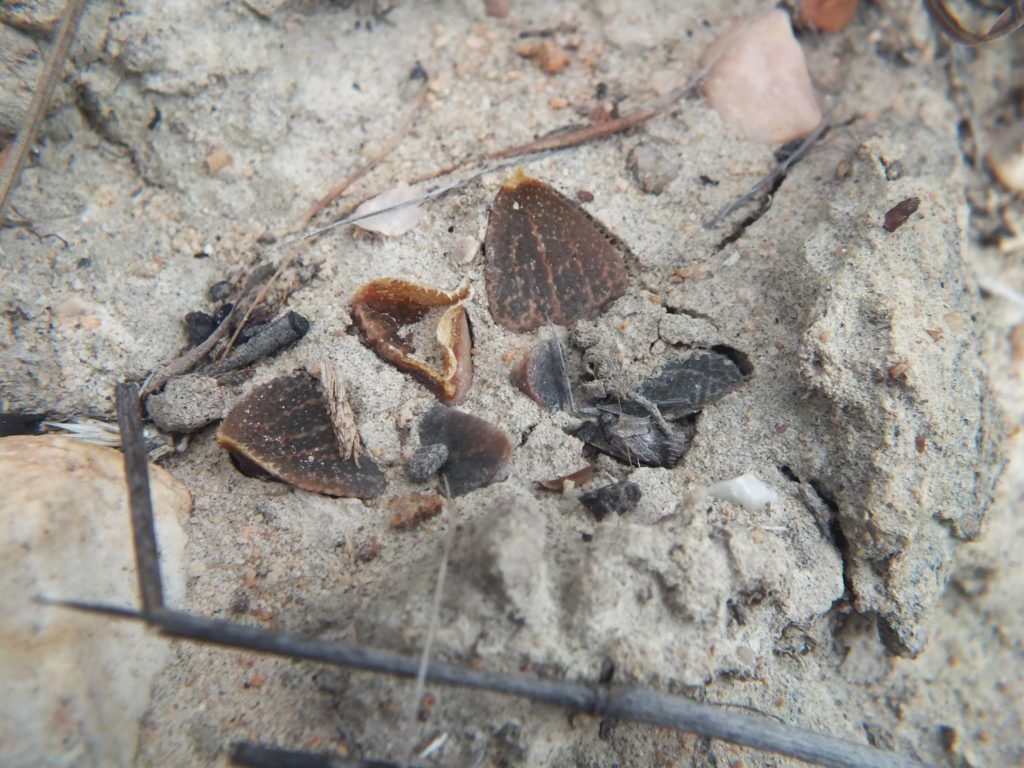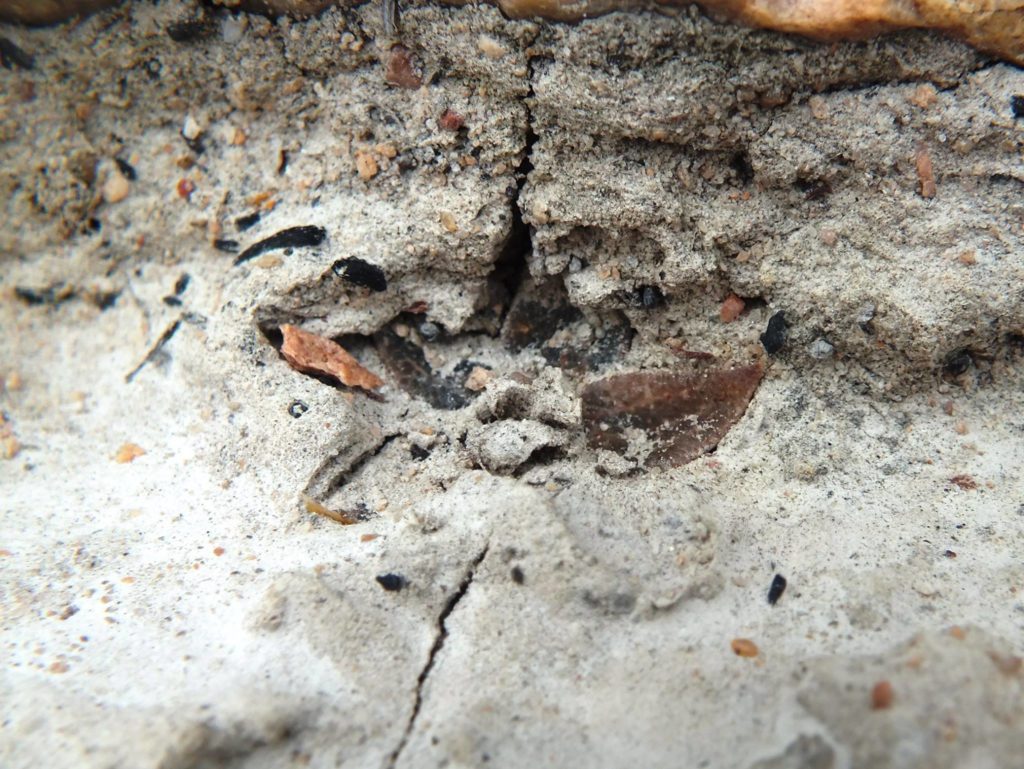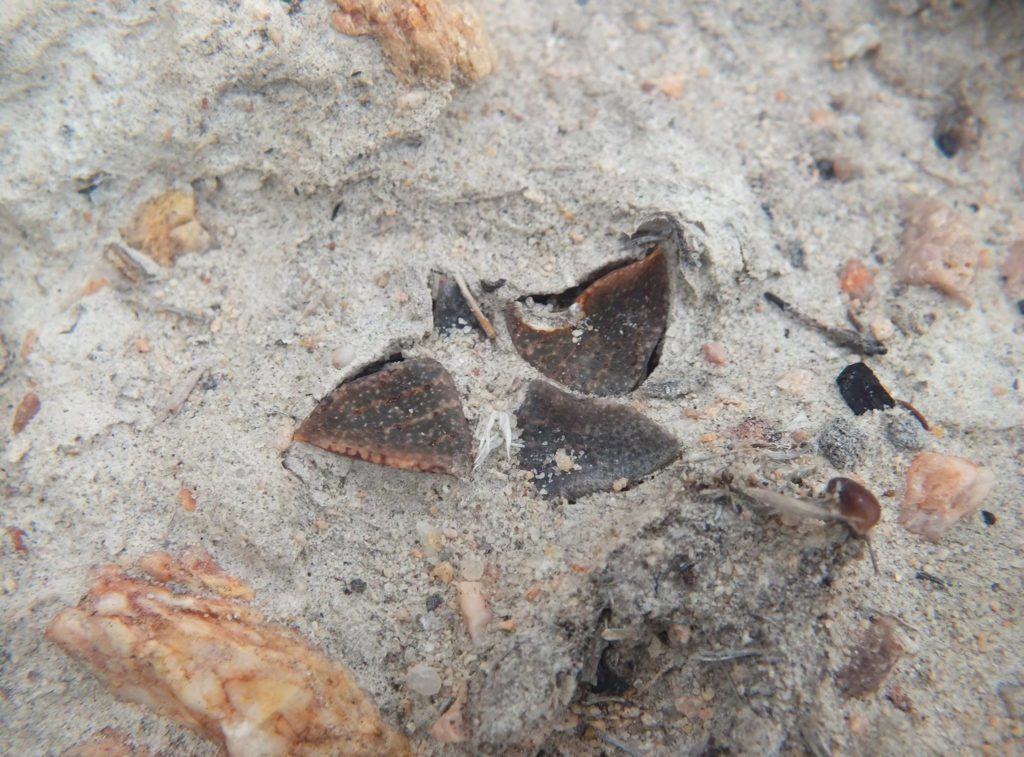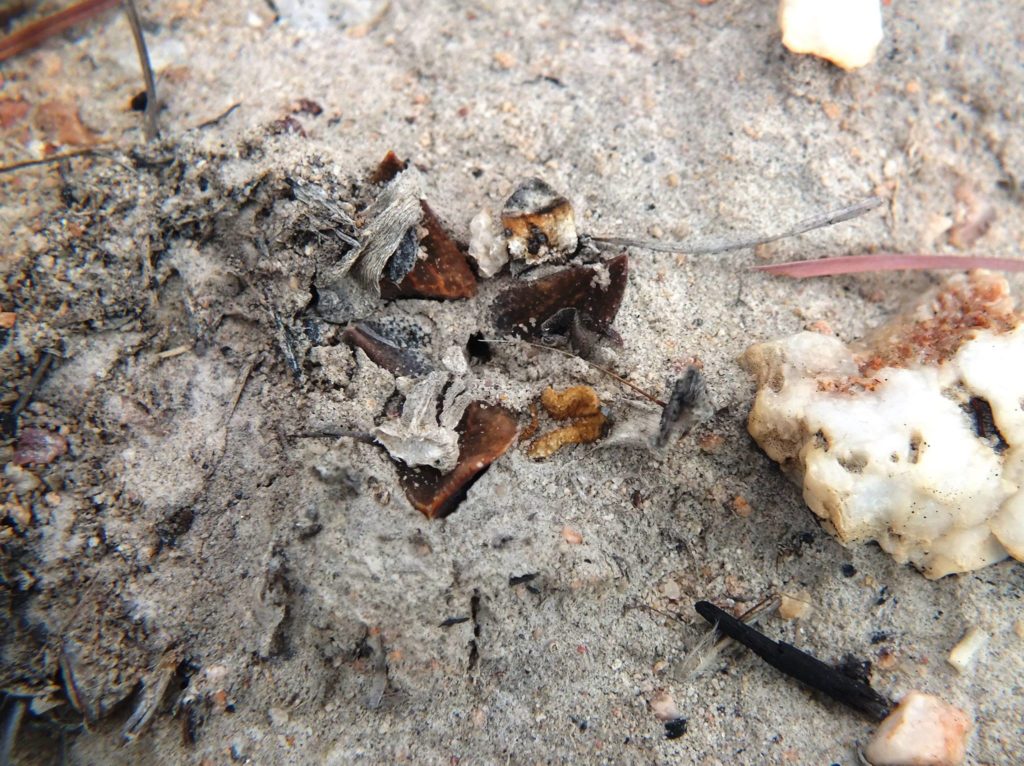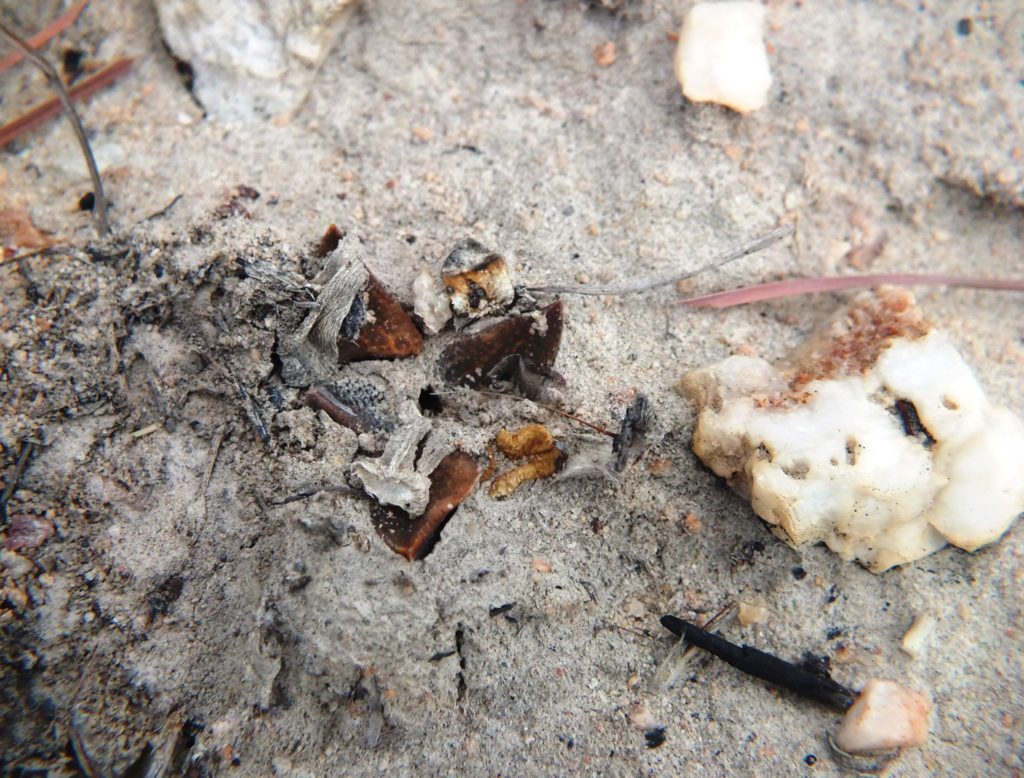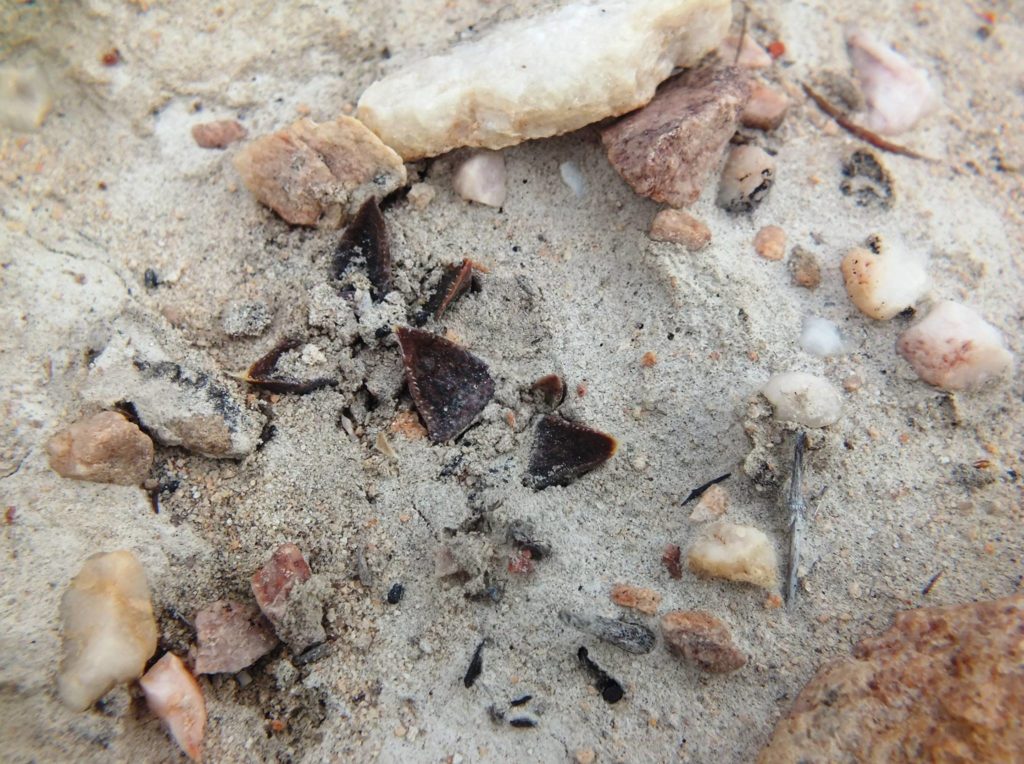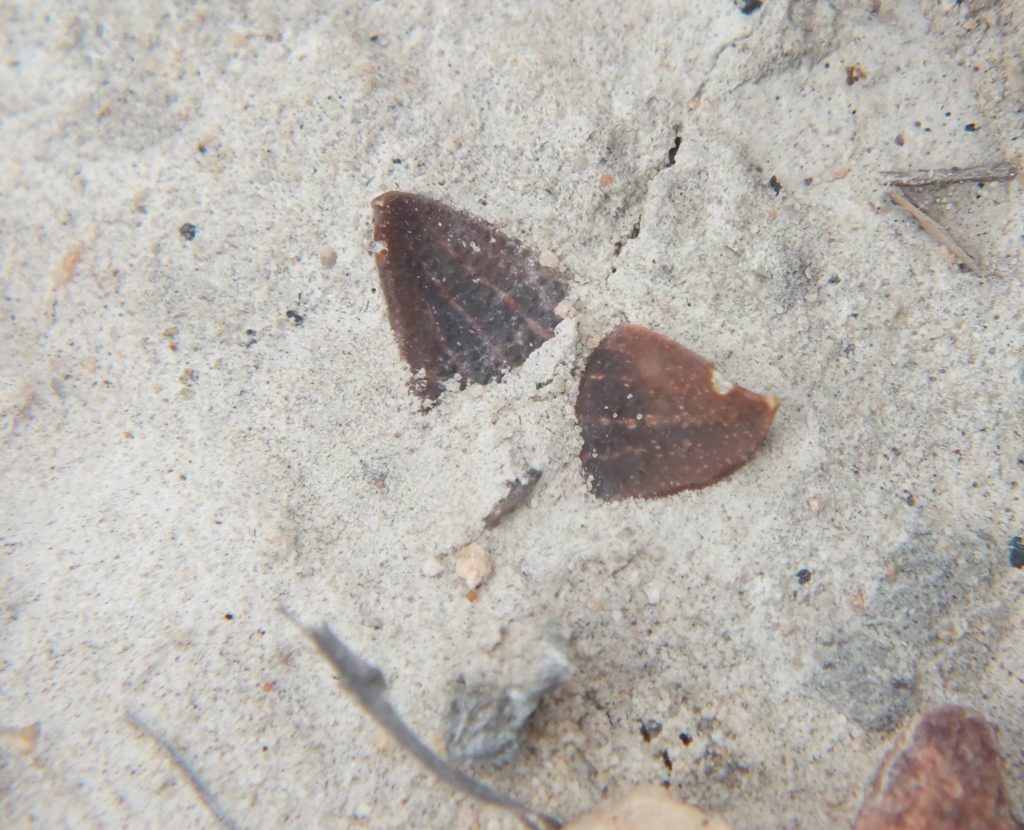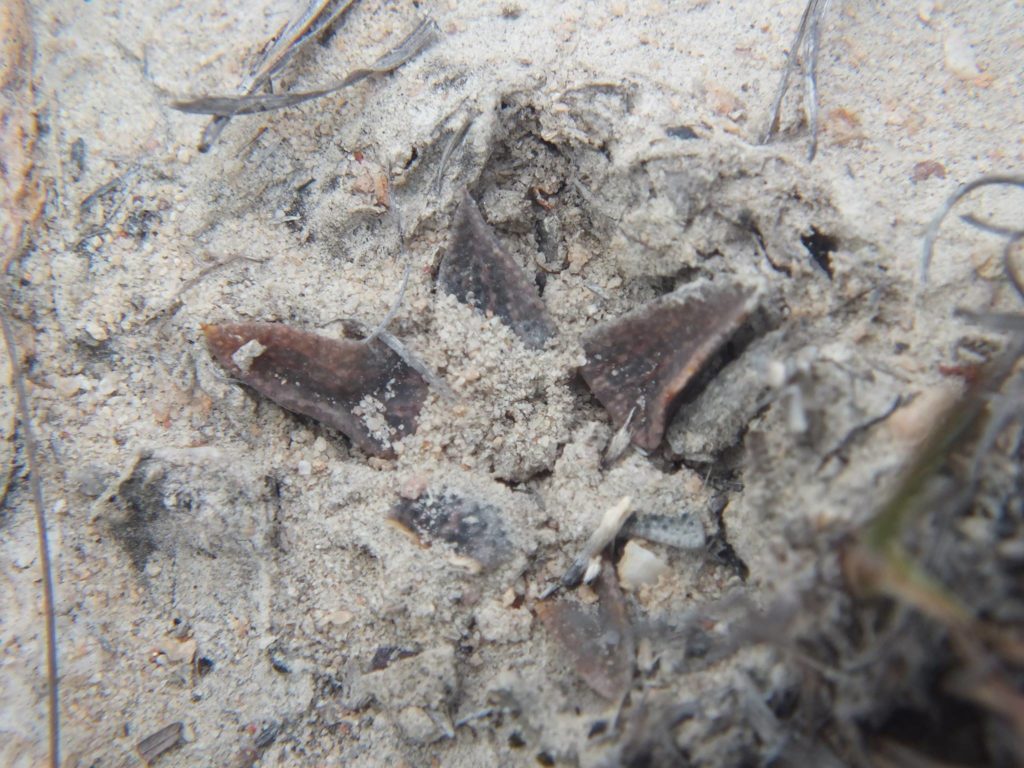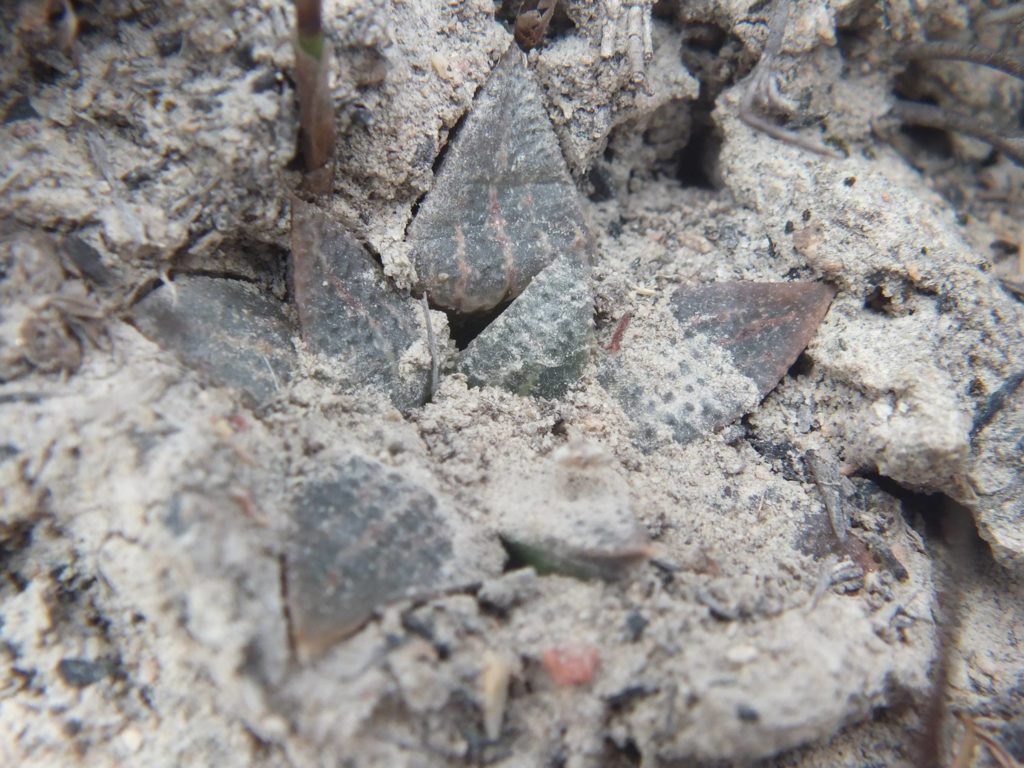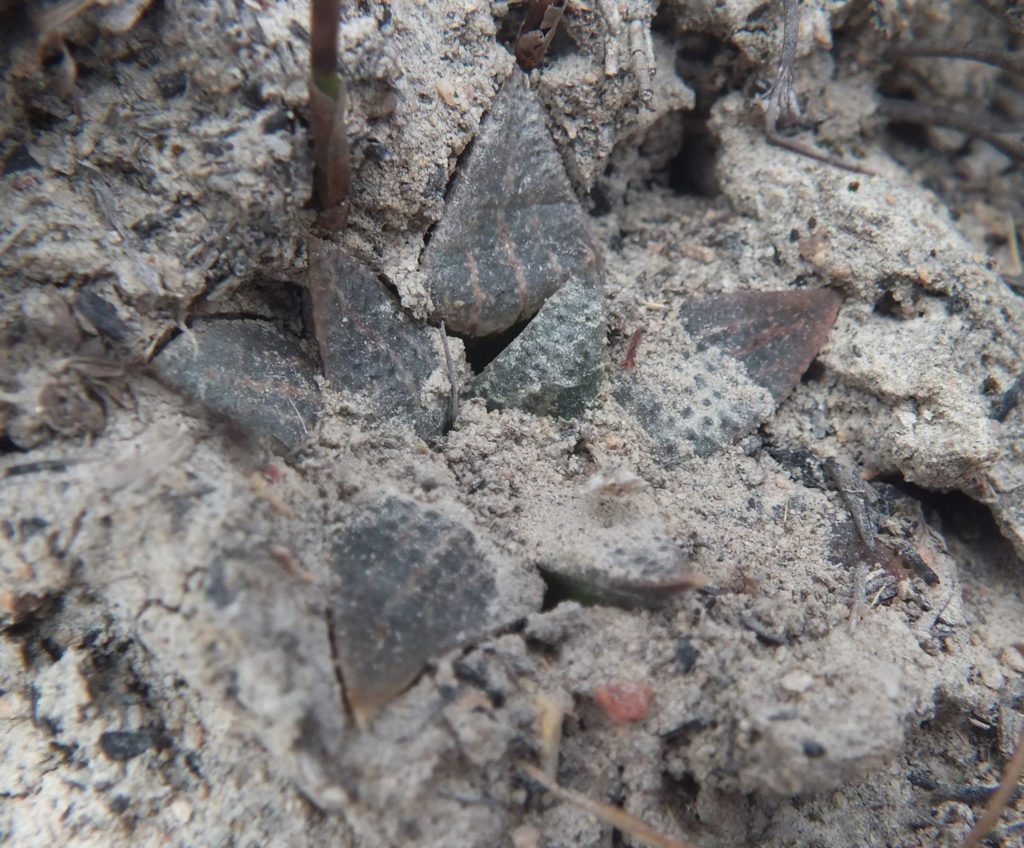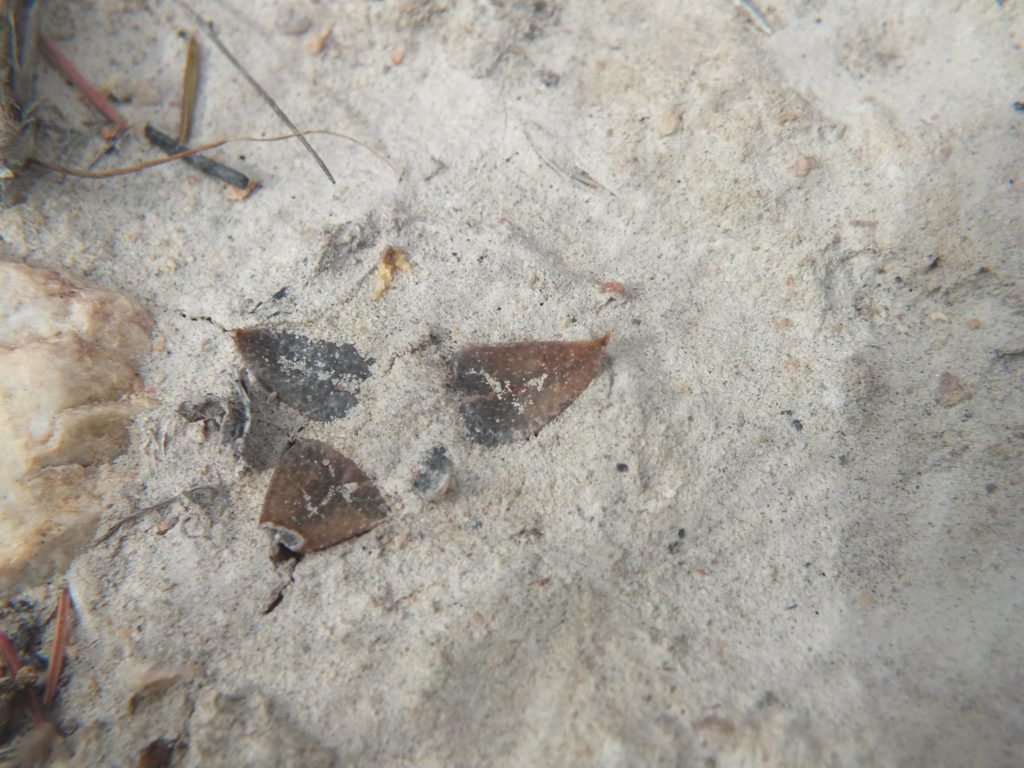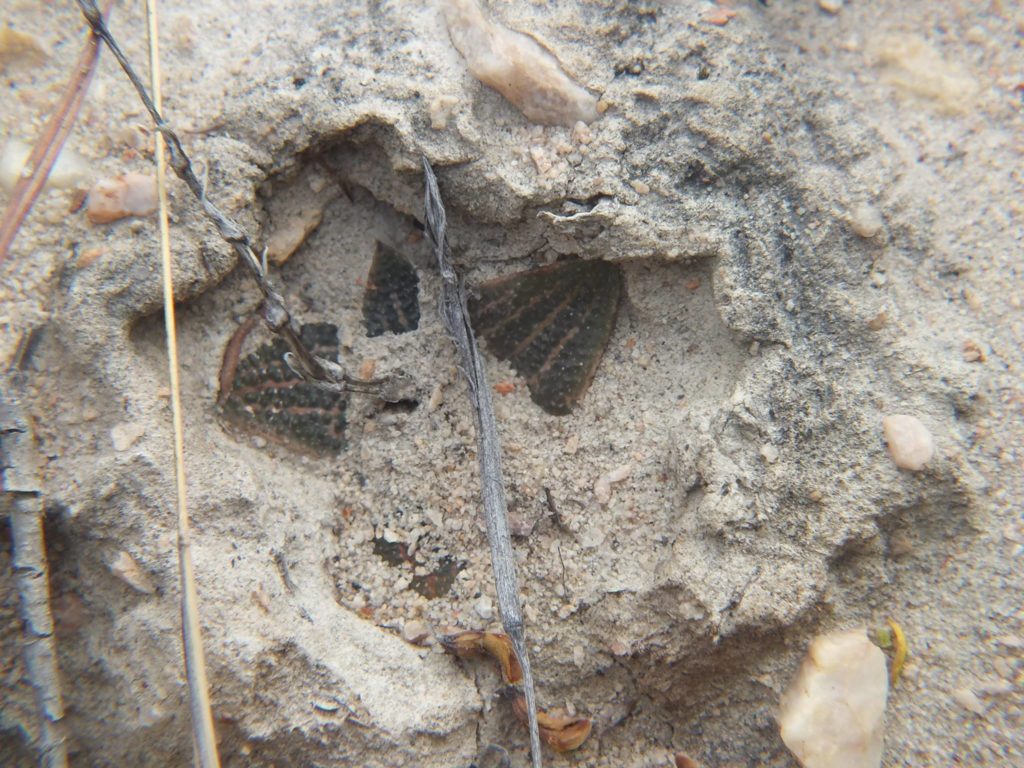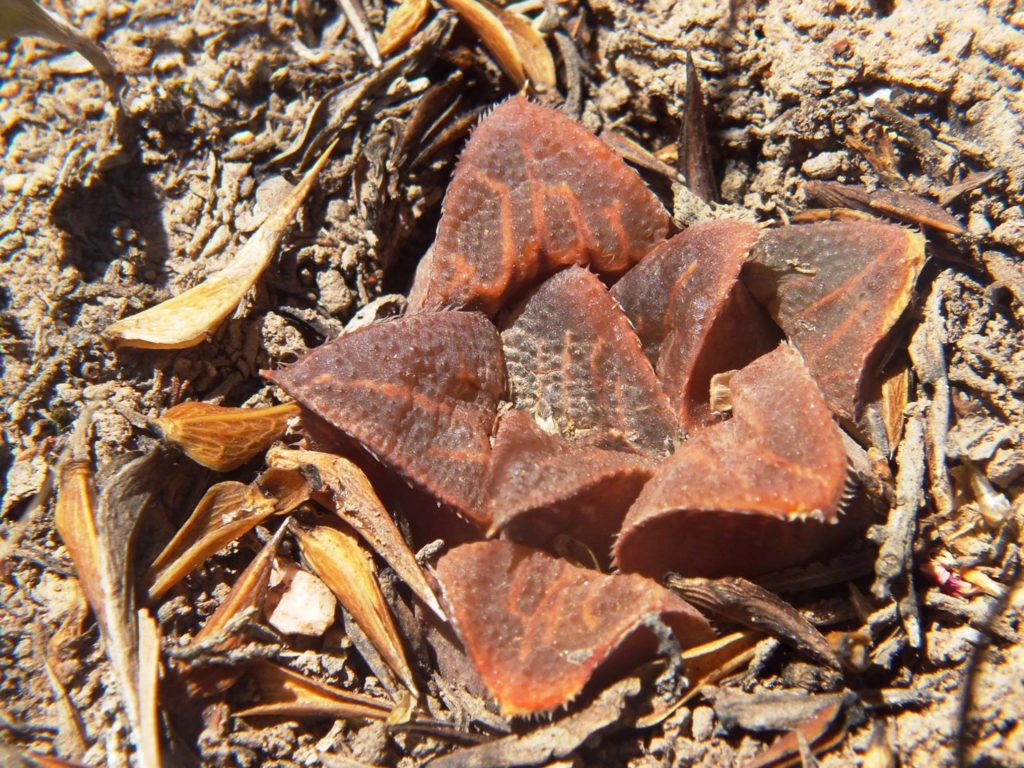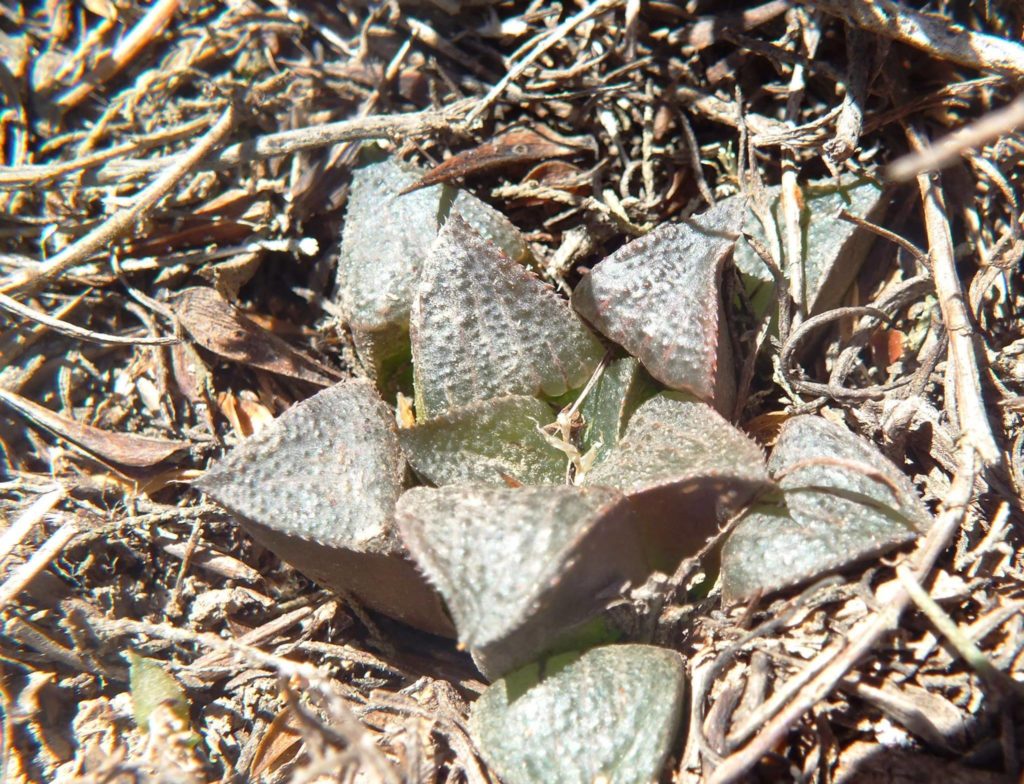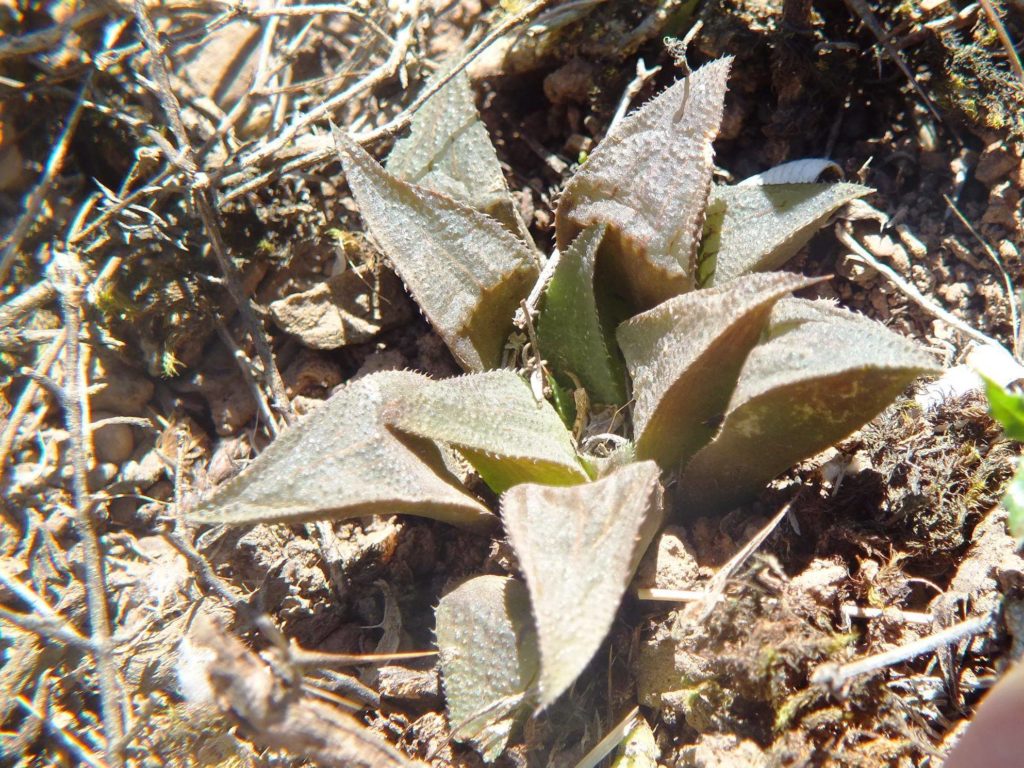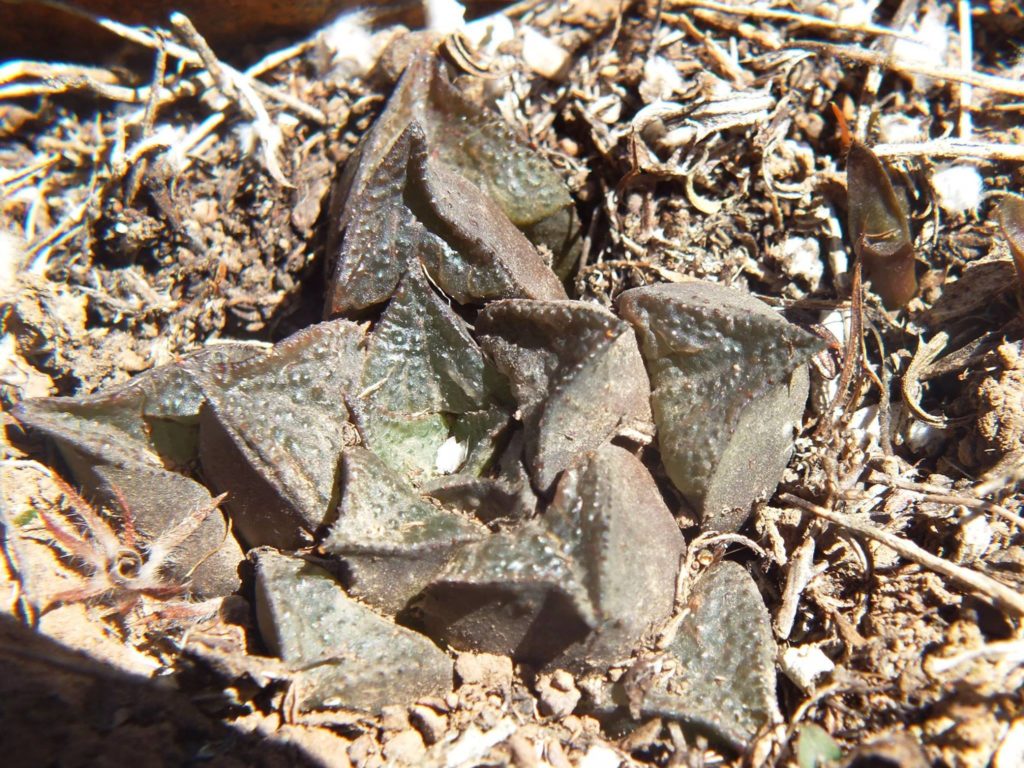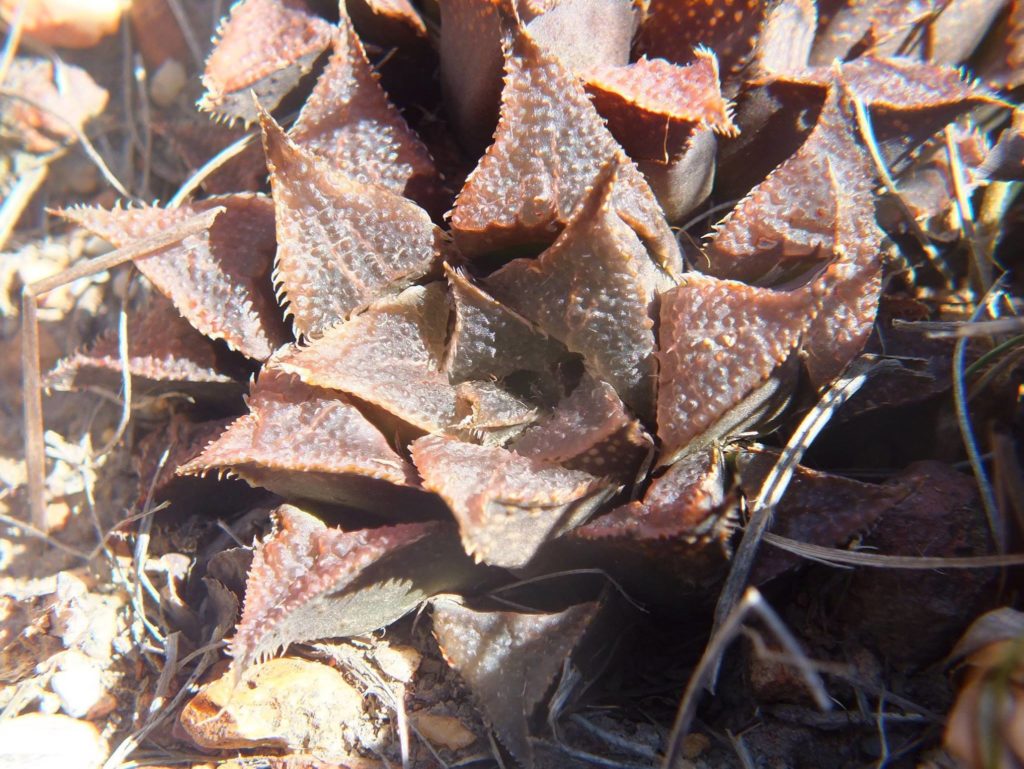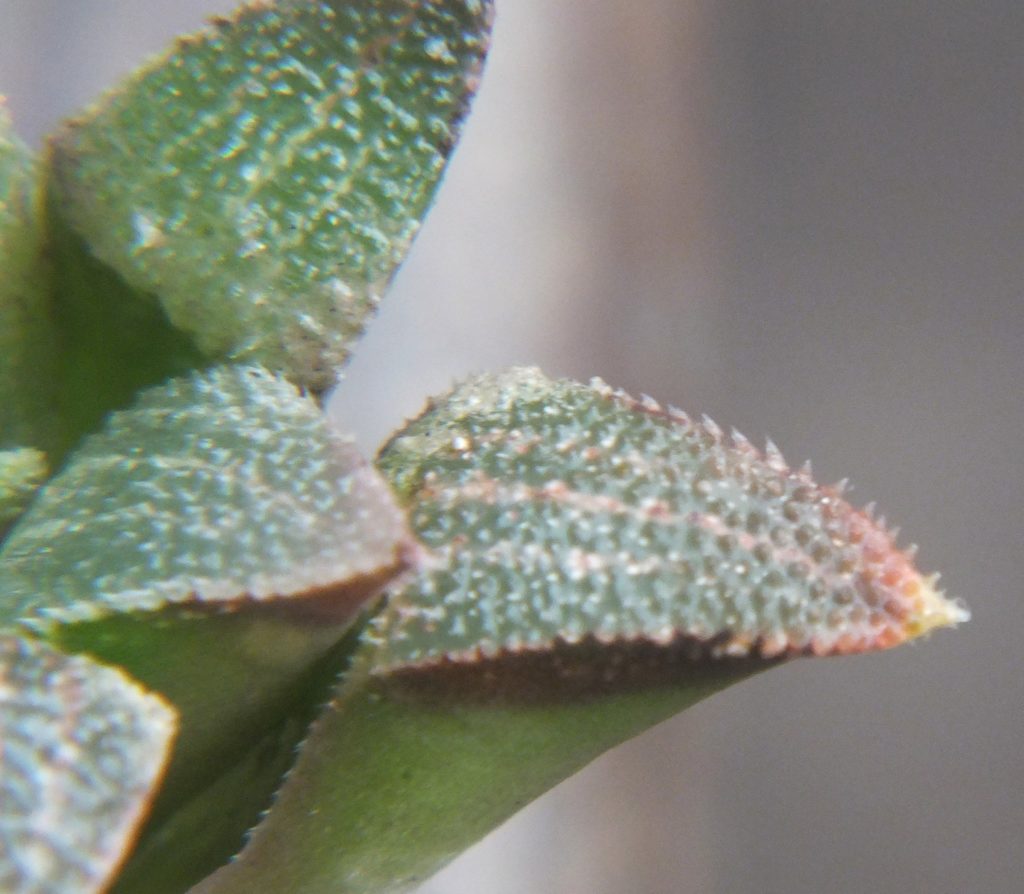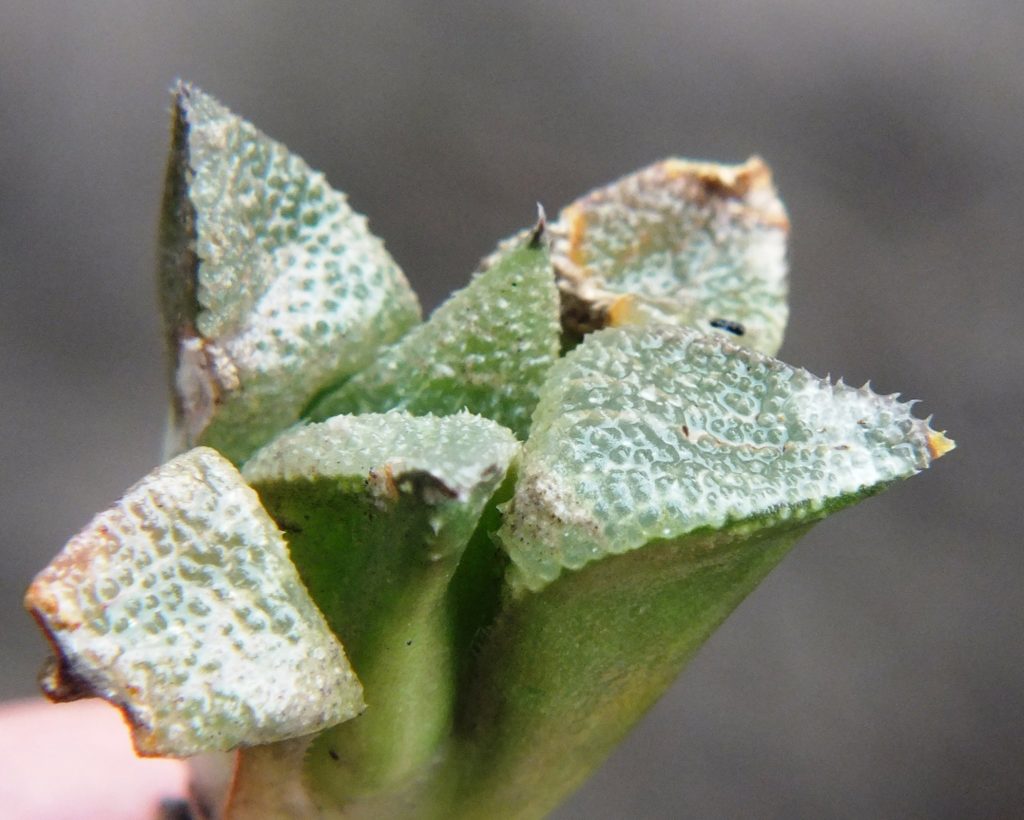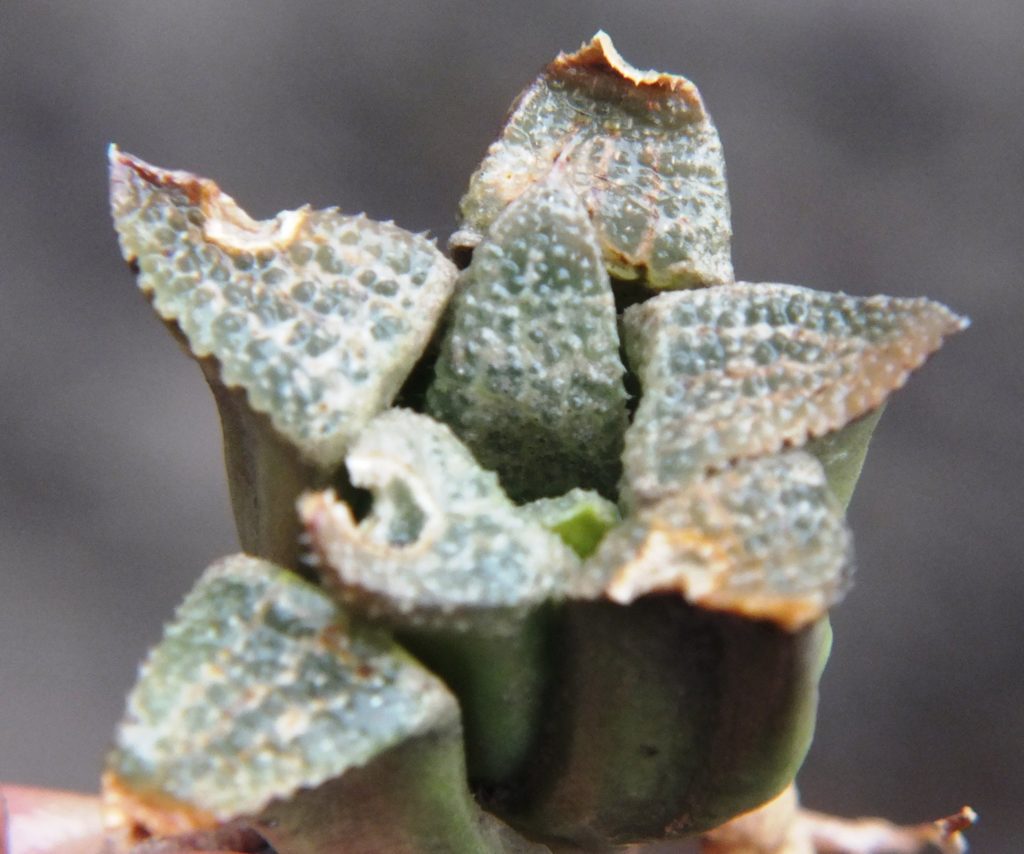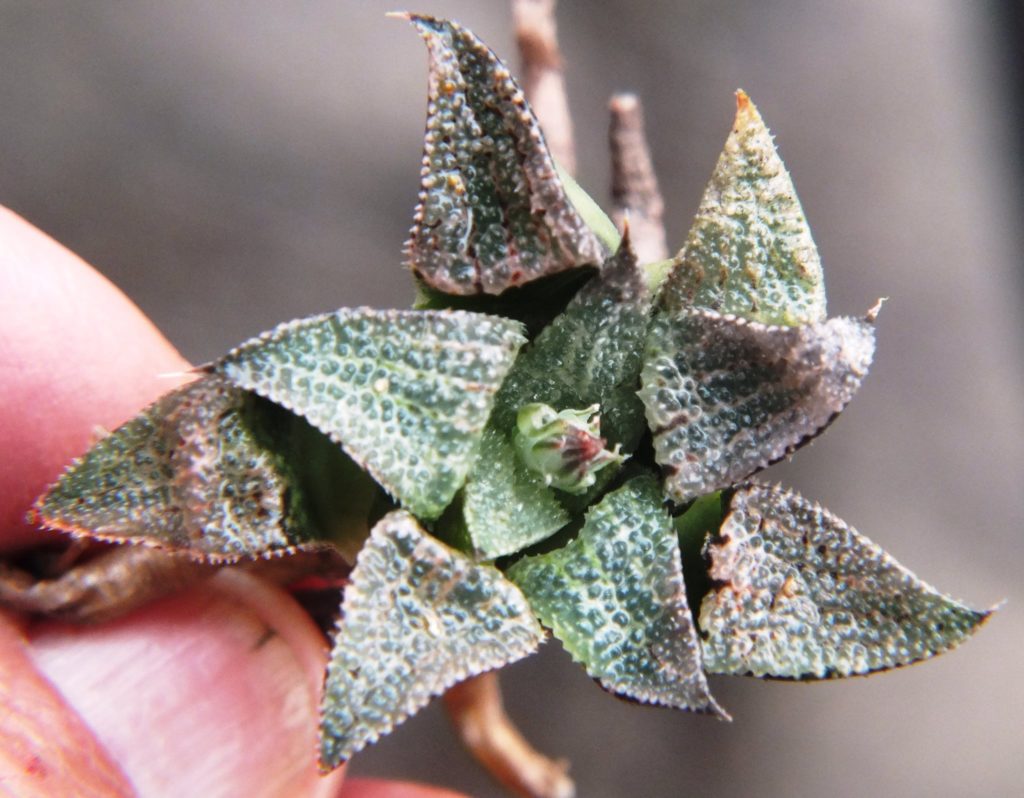Incidentally both the soft shale bands within the Sandstone strata as well as the Bokkeveld Shale above, decompose to kaolinic clay.
I took so many pictures that I will just post because I was so fascinated myself. The population is in an area quite new to me and wholly empty as far as haworthia records go – but perfectly predictable if you throw out the chaff. In the meantime, keep thinking.
The plants were all in much the same situations among sparse restioids and grass and very few other succulents. Next I will post better pictures of a few plants and explain a bit more.
What do we have so far? Mirabilis, ‘magnifica’, atrofusca, pygmaea, comptoniana, esterhuizenii, Quite good actually – but some serious omissions. Any more offers – these are all excellent.
Just to make sure the name “magnifica” makes sense, here are a few pictures taken at the type locality.
While looking at those magnifica pictures I was struck by these two to show how a retusa influence is present.
A closer look at the new find.
The scenery

Those flat top hills are the remnants of an ancient african plateaus prominent from near Barrydale to beyond Uniondale – north of the Langeberg. – silcrete upper layer like the concreted layers also present topping the inselbergs south of the Langeberg.
So what is it? If H. magnifica makes sense to anyone as a species, that person is lost to me. This new population is in the sequence from Muiskraal eastwards and it is H. emelyae (‘breueri’, ‘wimii’). The identifications put forward are nearly all in the context of H. mirabilis which includes ‘magnifica’. This naturally supports my perceptions that H. emelyae is in fact the karoo extension of H. mirabilis. More widely that H. mirabilis, pygmaea, retusa and emelyae form a single system. If one reads in the Updates the reports of Towerlands/Aaasvoelkrans one will appreciate the connection better. The “magnifica’ as a species myth is simply and easily dispelled by studying the floral data presented in updates. There is no reason why there should be any doubt and confusion that the cabal so enjoys and wallows in. Aloe barbara jeppeae indeed.
The truth of the matter is that there is no taxonomic solution other than recognising this and stop prostituting science in the name of populism. There are hundreds if not thousands of people interested in Haworthia, and millions affected by the formal names of plants. I see some responsibility in respecting this fact and even more so in trying to understand what all this marvelous stuff really means. It comes down to what a species truly is and how it is defined. If I could bring just one person to that realization I might feel comfortable – with no one caring a damn, I am not. :) I have not far or long to go now and I will be posting more on this topic before I am finished.
M.B. Bayer
June 2016

